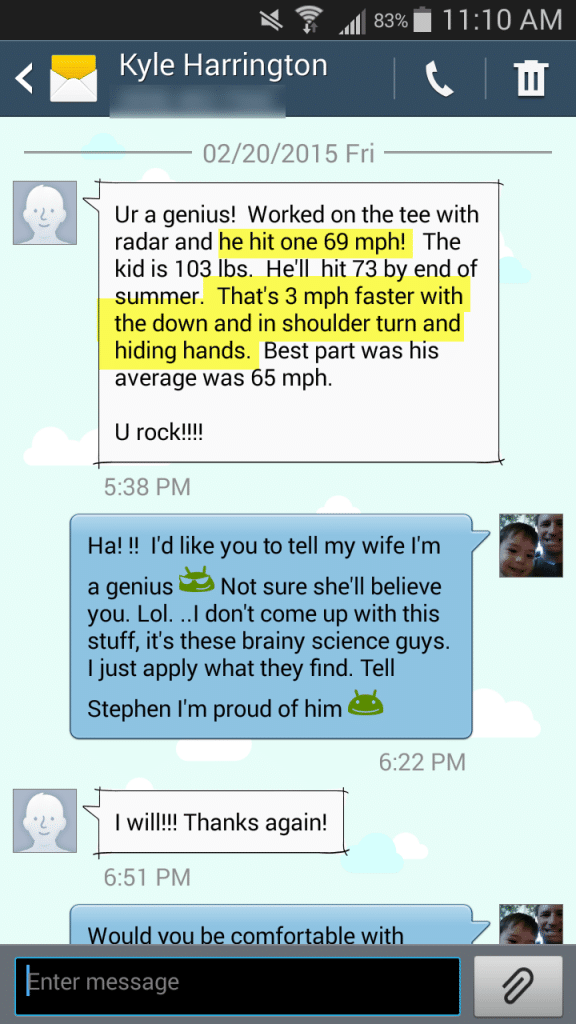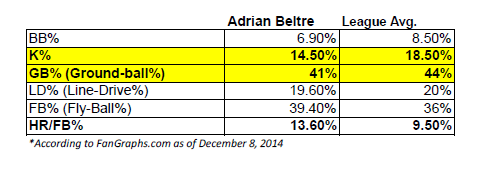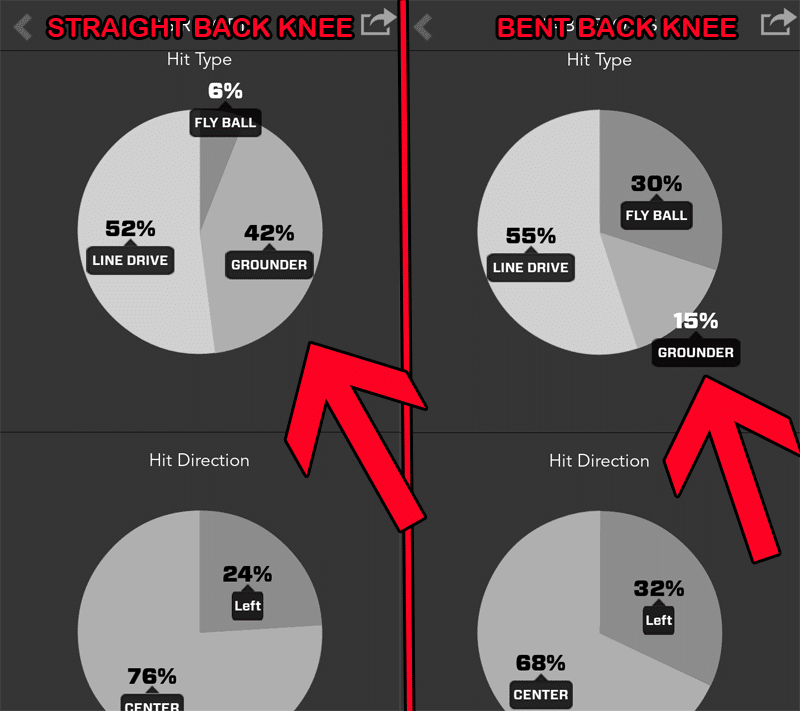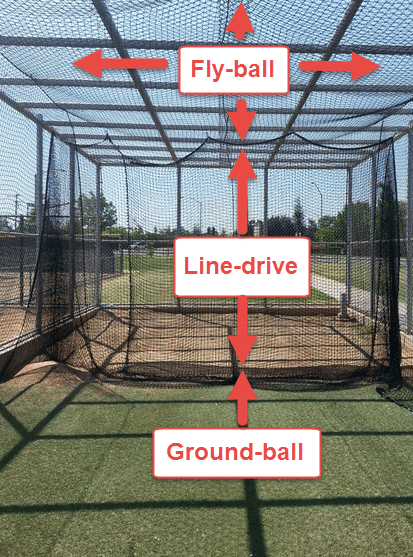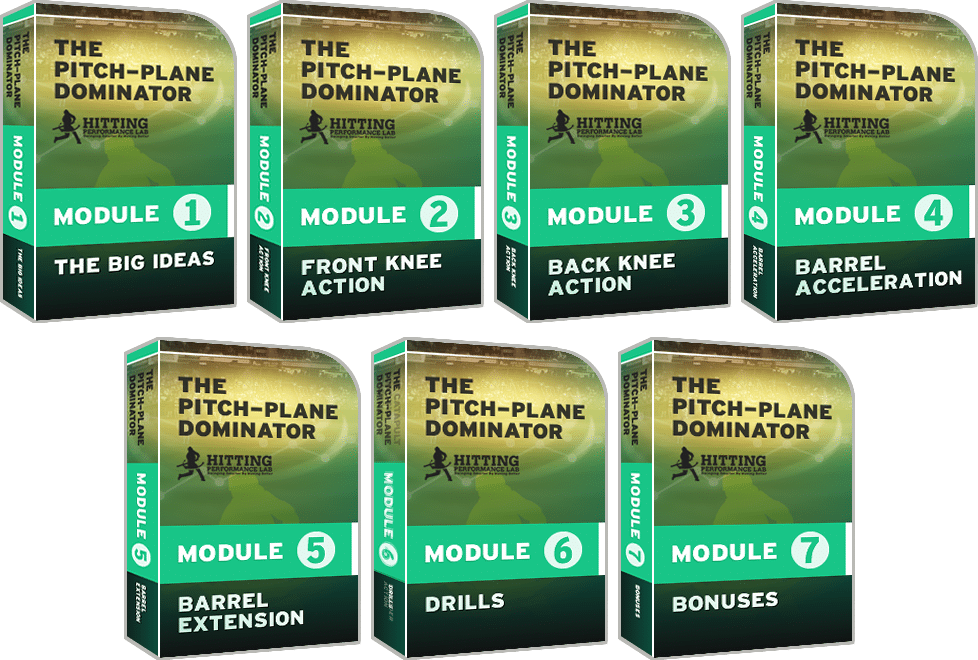In This Video, You’ll Learn…
- The Zepp swing experiment revealing the affect the back leg angle has on ball flight,
- How-to stay short (or low) during Final Turn (using the pole-over-head metaphor),
- The optimal back knee angle during Final Turn (relating to Fastpitch difference), and
- How the back foot adds stability during the Final Turn.
Getting Under The Ball Like Stephen Vogt – A Baseball Swing Plane Experiment

August 2014 Stephen Vogt (21) hits a solo home run. Mandatory Credit: Kyle Terada-USA TODAY Sports
Stephen Vogt side note: CLICK HERE to watch video of him doing referee impersonations, he’s apparently known for, on Intentional Talk. That’s Johnny Gomes in the background 😀
Question: Can the Back Leg Angle Affect Ball Flight During the Final Turn?
Using the Zepp (Labs) Baseball app , I wanted to use the Scientific Method to analyze the effect the back leg angle has on ground balls, line drives, and fly balls.
, I wanted to use the Scientific Method to analyze the effect the back leg angle has on ground balls, line drives, and fly balls.
Background Research
Two posts I’ve written that talk about the back leg angle:
In the above posts, pay particular attention to what Homer Kelly says about Knee Action.
As of the beginning of May 2015, Stephen Vogt of the Oakland Athletics, is ranked 2nd overall in OPS at 1.179 (according to MLB.com’s sortable stats). Can he hold this up all year? Maybe, maybe not. But the metrics I’m about to reveal have a solid base in his back leg angle mechanics.
He has a very distinct back leg angle during the Final Turn and follow through (see image above). Here’s how his metrics stacks up over four seasons, against the league average (according to FanGraphs.com):
- Ground ball% – Stephen Vogt (32.6%), League Average (44%)
- Line Drive% – Stephen Vogt (20.7%), League Average (20%)
- Fly Ball% – Stephen Vogt (46.6%), League Average (36%)
- Home-run/Fly-ball Ratio – Stephen Vogt (10%), League Average (9.5%)
So he’s well below the league average in ground-balls, slightly higher in line drives, and has a 0.5% higher home-run to fly-ball percentage. The latter meaning what percentage of his fly-balls go over the fence. Lastly, as you can clearly see, Stephen Vogt has an above average fly-ball percentage. Remember, fly-balls aren’t always bad. Most times, they’re more productive than ground-balls in sacrificing runners over or bringing them in to score.
Hypothesis
Based on the above research and with my own experience, I think that having the back leg angle bent in an “L” (or 90-degree angle) during the Final Turn and follow through will produce more elevated line drives and fly balls. Whereas a straighter back leg angle (closer to 180-degrees) will produce more low level line drives and ground balls.
Baseball Swing Plane Experiment: “Staying Low”

Here was how I setup the experiment “work station”
Equipment Used:
Setup:
- Yellow dimple ball feedback markers = my bat length, plus two baseballs
- Distance from plate = end of the bat touching inside corner of plate, and knob of bat touching my mid-thigh.
- Tee was set slightly behind the front feedback marker, and tee height was about mid-thigh.
- First 100 baseballs were hit with a 90-degree back leg angle during the Final Turn and follow through.
- Second 100 baseballs were hit a straighter back leg angle (about 170-degrees) during the Final Turn and follow through.
Data Collected (Zepp Baseball App Screenshots):

Fig.1: Here are the averages of both sessions. Pay particular attention to the “Bat Vertical Angle at Impact” and “Attack Angle” preferences…
According to the Zepp app user guide, let’s define the following terms:
- Bat Vertical Angle at Impact – This is the Vertical angle (Up or Down) measured in degrees, of your bat barrel in relation to the knob of the bat, when it makes impact with the ball.
- Attack Angle – Attack Angle is the direction the bat barrel is moving (Up or Down) at impact. A positive number would mean your barrel is going UP at impact, zero is LEVEL and a negative number is the barrel going DOWN at impact.
Check out the ground-ball, line drive, and fly-ball comparison:

Fig.2: Check out the difference in ball flight between the two sessions. Pay particular attention to the ground-ball percentages.
Data Analysis & Conclusion
I wasn’t paying too much attention to bat and hand speed on this experiment. I only focused on the metrics indicating a change in ball flight.
- Attack angle had a 3-degree difference according to Fig.1.
- Bat Vertical Angle at Impact also had a 3-degree difference according to Fig.1.
- 27% difference in ground-ball% according to Fig.2.
- 24% difference in fly-ball% according to Fig.2.
Notes

This were the rules I used for ball flight in the cage during the Experiment.
- Here’s a picture (image to the right) of the cage I hit in and the labels for each batted ball outcomes.
- I’m not sure why the Bat Vertical Angle at Impact was larger for the “Straight Back Knee”. Maybe it had to do with my back knee starting bent towards impact, but then the barrel compensated by “pulling up” to accommodate the straightening back knee. This disturbance in the pitch plane is NO bueno.
- I found myself reverting back to old habits (Bent Back Knee) during the Straight Back Knee session. There were at least a dozen balls I hit that had more bend than I wanted during that session.
- During the “Bent Back Knee” session, about 65% of my fly-balls were “shots”, and didn’t hit the back of the cage to be considered a line drive.
- I find with small sluggers like Stephen Vogt bend their back knee between 90-105 degrees during the Final Turn. With fastpitch softball, the angle of the back knee isn’t quite so drastic because of the reduced plane of the pitch. If I can get my softball players to be 105-120 degrees with the back knee angle, then I’m happy.
In Conclusion
So the back knee angle during the Final Turn does have a significant impact on ball flight. More bend equals, more airtime for the ball. I’ve seen Little Leaguers to Pro hitters straightening out their back legs. And they often wonder why they aren’t driving the ball.
In terms of driving the ball like Stephen Vogt, think of the back leg angle as angling your body like a “ramp”. Also, take a look at smaller sluggers (6’0″, 225-lbs on down) like: Adrian Beltre, Stephen Vogt, Jose Bautista, Josh Donaldson, and Andrew McCutchen as great examples of back knee bend.
Introducing The Pitch-Plane Dominator Online Video Mini-Course

Sick of struggling to reduce your hitter’s ground balls, swing and miss strikeouts, and non-productive weak fly balls? This simple 4-Step online video mini-course (7-modules total) will help hitters weighing less than 100-pounds, barrel the ball more consistently. Dramatically decrease ground balls, strikeouts, and weak fly balls (no matter the pitch location or speed) by applying human movement rules validated by science.
If you haven’t already, then CLICK the Link below to…



